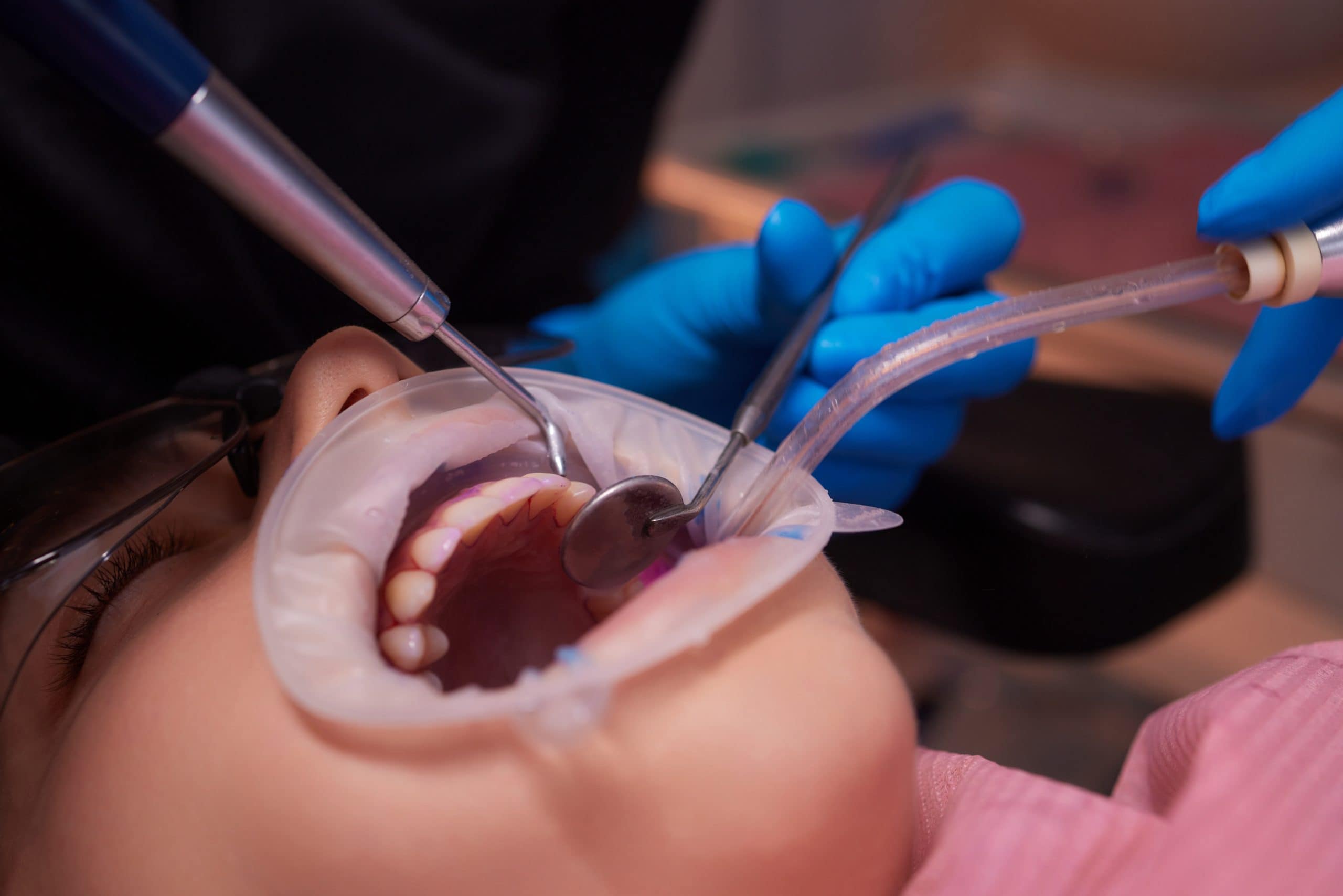Many patients understandably ask, “Are teeth weaker after a root canal procedure?” It’s a fair and important question. When facing dental treatment, it’s natural to want to understand how it might affect your long-term oral health. If you’ve been advised to undergo a root canal, concerns about the strength and function of your tooth after treatment are completely valid.
A root canal procedure involves removing inflamed or infected pulp from inside the tooth. This process may raise questions about the tooth’s structural strength. However, modern techniques are designed to clean and seal the tooth while preserving its outer structure. With proper care and restoration, such as a well-fitted crown or filling, the tooth can continue to function effectively and support your bite.
In this article, we’ll explore what current dental research says about post-treatment tooth strength. We’ll also explain how root canal treatment works and what steps help protect and reinforce the tooth afterwards. This information is provided for general guidance only. Please consult with your dentist to receive personalised recommendations tailored to your individual needs.
Contents Navigation
- Summary of The Content
- Root Canal Treatment Basics: Tooth Pulp Removal and Structural Impact
- Do Root Canals Actually Weaken Teeth?
- Factors That Affect Tooth Strength After Root Canal
- Protecting Your Tooth After Root Canal Treatment
- Signs to Watch For and When to Contact Your Dentist
- Long-Term Outlook
- Signs of a Failed Root Canal and What to Do Next
- Final Thoughts
Summary of The Content
- Root canal treatment removes infected tissue from the inside of the tooth while preserving the strong outer layers.
- The root canal procedure helps keep natural teeth that would otherwise need to be extracted due to infection or damage.
- Modern techniques prioritise preserving healthy tooth structures and enhancing comfort during and after treatment.
- Proper restoration, such as a well-fitted crown or filling, is crucial for protecting the tooth and maintaining its function.
- Most teeth that have undergone a root canal continue to function well for many years, often decades.
- Common concerns about tooth strength relate more to pre-existing damage than the procedure itself.
- Consistent oral hygiene, checkups, and avoiding excessive force support long-term success.
- Delaying the final restoration can increase the risk of reinfection or fracture.
- Early signs of complications include prolonged pain, swelling, or recurring infections.
- Prompt attention and preventive care improve outcomes and help maintain tooth health.
Root Canal Treatment Basics: Tooth Pulp Removal and Structural Impact
Each tooth is made up of three main layers. The hard outer shell, known as enamel, protects the tooth from daily wear and tear. Beneath the enamel is dentine, a porous layer that supports the enamel and can transmit sensation. At the centre is the pulp chamber, which houses nerves and blood vessels. This inner tissue, known as the dental pulp, helps the tooth develop but is not essential for its long-term function once it matures.
When the tooth pulp becomes infected or inflamed, often due to tooth decay, trauma, or deep fillings, root canal treatment may be recommended. This dental procedure involves carefully removing the infected tissue from the pulp chamber and canals and then cleaning, shaping, and disinfecting the space. The area is then sealed using a biocompatible material, such as gutta-percha, to prevent further infection.
You can think of it like cleaning out a pipe: the inside contents are removed, but the pipe itself remains intact. Similarly, during root canal therapy, the inner tissue is taken out, but the natural tooth and its strong outer layers are preserved.
Although the procedure removes the nerve supply from the tooth, it retains the tooth’s crown, enamel, and most of the dentine. This process allows the tooth to continue functioning in chewing and maintain its position in the bite. The primary aim of endodontic treatment is to retain the affected tooth rather than recommend an extraction.
Thanks to modern endodontic techniques, the process has become more precise and conservative. These approaches allow dentists to preserve as much healthy tooth structure as possible, reducing the need to remove surrounding areas.
Do Root Canals Actually Weaken Teeth?
Root canal treatment doesn’t weaken teeth. Any perceived weakness typically stems from existing decay or damage rather than the treatment itself. The procedure helps preserve teeth that might otherwise be lost due to deep infection or trauma.
While the tooth no longer has an internal sensation after the nerve is removed, it remains functional. Surrounding tissues continue to support and nourish it.
In fact, a long-term study found that approximately 93% of teeth that had undergone root canal treatment remained functional after 10 years, and more than 80% remained functional beyond 20 years. These results show that root canal treatment has a strong track record when combined with good oral hygiene and a protective restoration.
Factors That Affect Tooth Strength After Root Canal
After root canal treatment, patients often wonder how strong their teeth will remain over time. While the procedure removes infection and preserves the tooth’s outer structure, several factors influence how well the tooth functions afterwards. Understanding these factors can help patients determine what affects long-term function and care.
Amount of Remaining Tooth Structure
How strong a tooth remains after root canal treatment often relates to how much healthy structure is still in place. If only a small area is affected by decay or damage, the tooth may be restored using a filling, especially when the outer layers remain mostly intact.
However, if a significant portion is missing, often due to large cavities or fractures, a dental crown may be recommended. A crown helps protect the tooth from chewing pressure and lowers the risk of future fractures.
Your dentist will check the remaining tooth visually and often review an X-ray to determine the level of support needed and the most suitable type of restoration.
Type and Quality of Restoration
The material and design used to restore a tooth after root canal treatment can affect its strength and function over time. The most suitable option depends on how much of the original tooth remains and where the tooth is located.
- Composite fillings:
These are tooth-coloured and often used when only a small amount of structure is missing. They bond well to the remaining surface and blend with the natural appearance of the tooth. - Amalgam fillings:
Made from a durable metal alloy, these may still be used for back teeth that require extra strength. However, some people may choose composite fillings because they closely match the natural colour of their teeth. - Crowns:
These fully cover the tooth and are usually recommended when more structure is missing. Crowns help distribute chewing pressure evenly and reduce the risk of fracture, especially in molars that absorb more biting force.
The fit and material of the restoration play a key role in long-term success and how well the tooth functions after treatment.
Patient Oral Health Habits
How you care for your teeth after root canal treatment can influence how long the restored tooth remains functional. Consistent daily care and avoiding strain on the tooth can help maintain strength and reduce the risk of damage or reinfection.
- Brushing and flossing:
Cleaning your teeth twice a day and flossing daily helps remove plaque and lowers the risk of new infection around the restored area. - Teeth grinding (bruxism):
Grinding or clenching can place pressure on the tooth and increase the risk of fracture. A night guard may be recommended if this is a concern. - Nail biting or chewing on objects:
Using teeth to bite nails, pens, or open packaging can weaken the tooth or damage the restoration over time. - Regular dental checkups:
Routine checkups allow your dentist to monitor the teeth that have had root canal treatment and the surrounding areas. Early signs of wear, reinfection, or bite changes can be addressed promptly.
Timing of Final Restoration
Prompt completion of the final restoration after root canal treatment is essential. Once the inner part of the tooth has been cleaned and sealed, it needs a strong outer covering to protect it from bacteria and pressure during chewing.
Delaying this final step can leave the tooth vulnerable to reinfection or structural weakening. Temporary materials, though helpful for short-term protection, are not designed to last. If left in place too long, they may break down or allow bacteria to re-enter.
Below are common restoration types and when they’re typically completed:
- Filling only:
When a tooth has minimal damage, a filling can often be placed on the same day or shortly after the root canal procedure is completed. - Temporary filling followed by crown:
If a crown is needed, a temporary filling is placed first. The final crown is ideally completed within two weeks. - Maximum timeframe:
Most dentists recommend completing the final restoration within 30 days to lower the chance of fracture or reinfection.
Protecting Your Tooth After Root Canal Treatment
Caring for your tooth properly after root canal treatment is key to a smooth recovery and long-term function. While the procedure removes the infection, the healing process still requires attention.
Some people may ask, “Are teeth weaker after a root canal procedure?” The tooth may be more vulnerable until fully restored, but with the right care, it can continue to function well.
Immediate Post-Treatment Care (First 24-48 Hours)
The first two days after root canal treatment are crucial for minimising discomfort and protecting the affected tooth as the area begins to heal.
- Managing discomfort:
Mild sensitivity, a dull ache around the tooth, jaw, or nearby gums, is common after a root canal procedure. Applying a cold compress to the cheek can help reduce swelling. If pain worsens or lasts beyond 48 hours, or if you notice fever or swelling, contact your dentist immediately. - Eating with care:
In the first 24-48 hours, try to avoid chewing on the affected tooth, especially if it has a temporary filling. Choosing soft, lukewarm foods like mashed pumpkin places less stress on the tooth and supports comfort during healing. Avoid hot or crunchy items such as toasted bread, which may increase sensitivity or disturb the temporary material. - Activity restrictions:
Keep physical activity light and avoid strenuous exercise or heavy lifting during the first 24 hours, as increased blood flow may worsen swelling or discomfort. - What’s normal vs. concerning:
Some inflammation, mild sensitivity, or an aching feeling is typical. However, sharp pain, visible pus, a pimple on the gum, or a bad taste in the mouth could signal infection and should be checked immediately. - Temporary restoration care:
Avoid flossing near the temporary material for the first 24 hours, as it may dislodge the filling. Brush gently and rinse with warm salt water to reduce irritation and support healing.
Dietary Guidelines and Restrictions
After a root canal, your food choices can affect how smoothly the area heals. Concentrate on minimising irritation and protecting the affected area for five to seven days.
- Avoid these foods and drinks:
Steer clear of hard items like nuts and crackers, sticky foods like toffee or chewing gum, and anything extremely hot or cold, such as ice cream or hot soup. These can cause sensitivity or disrupt temporary restorations. - Tooth-friendly alternatives:
Choose soft foods served warm or at room temperature, such as mashed vegetables, scrambled eggs, rice, smoothies, or porridge. These are gentle on your teeth and easier to manage during the healing process. - Chewing guidance:
Try to chew on the opposite side of your mouth from the area that received treatment. This lowers the risk of pressure-related discomfort or damage to temporary materials.
Oral Hygiene
Good oral hygiene plays a crucial role in supporting the healing process after a root canal. While daily cleaning remains important, a few temporary adjustments can help protect the area.
On the first day, brush gently using a soft-bristled toothbrush and avoid flossing near any temporary material to prevent it from being dislodged. From the second day onward, resume gentle flossing unless your dentist advises otherwise. Rinsing the area with warm salt water can reduce irritation and help maintain cleanliness.
Once the final restoration is placed and any sensitivity subsides, return to your normal brushing and flossing routine. Pay extra attention when cleaning around crowns or large fillings, where plaque tends to collect. Using fluoride toothpaste and an alcohol-free mouthwash can support daily hygiene. Your dentist can advise if these are suitable for your needs.
When You Might Need a Dental Crown
A crown is often recommended after a root canal when a large portion of the tooth is missing or if the tooth is in a high-pressure area, such as a molar. It fully covers the tooth, helping to distribute bite forces and lowering the risk of fracture.
Wearing a mouthguard for sports or a nightguard for teeth grinding may also help protect the tooth after treatment from excess wear.
Routine dental checkups and professional cleanings are important after a root canal. These visits allow your dentist to monitor the tooth’s condition over time and address any concerns early.
Signs to Watch For and When to Contact Your Dentist
Recovery after a root canal often involves some mild symptoms as the area begins to heal. While most of these changes are temporary, it’s essential to recognise what is normal and what may require attention.
Being aware of typical healing signs versus symptoms that suggest a complication can help you manage your recovery and understand when follow-up care may be needed.
Normal Healing Symptoms
After a root canal, it’s normal to feel mild sensitivity when chewing or biting, along with slight tenderness around the tooth or gums. Some patients may also notice that their bite feels different at first.
These symptoms typically improve within one to two weeks as inflammation settles and the area continues to heal. Eating and brushing should become increasingly comfortable over time.
Gradual improvement is a good sign that the tooth is healing as expected.
Concerning Symptoms Requiring Professional Attention
While mild discomfort is normal in the early days after a root canal, certain symptoms may indicate complications. It’s important to recognise the difference between expected healing and signs that something isn’t progressing as it should. If you experience any of the symptoms below, please contact your dentist promptly to determine if follow-up care is necessary.
- Severe or worsening pain:
If pain intensifies instead of improving within three to five days, it may suggest lingering inflammation or reinfection and should be assessed by a dentist. - Visible swelling:
Swelling around the gums, jaw, or face that does not subside or worsen can signal an infection and should be checked promptly. - Prolonged sensitivity:
Sensitivity to pressure or temperature that persists for more than two weeks may indicate that healing isn’t progressing normally. - Signs of infection:
Look for gum tenderness, a pimple-like bump on the gums, an unpleasant taste in the mouth, or any discharge. These symptoms should be assessed by a dentist.
Emergency Situations
In rare cases, symptoms after a root canal may indicate an urgent issue. These require immediate dental or medical attention to avoid further complications.
- Severe throbbing pain:
Intense pain that does not improve with time or rest may be a sign of infection or pressure buildup. - Facial swelling:
Swelling that spreads rapidly or affects your ability to open your mouth should be evaluated promptly. - Fever or chills:
A raised temperature or feeling unwell may suggest a more serious infection that needs urgent care. - Broken or dislodged temporary restoration:
If the temporary filling or crown comes loose or breaks, the exposed area may become vulnerable to bacteria or damage.
Follow-up Care Schedule
Follow-up visits play an important role in the success of your root canal recovery. Most patients return to the dentist within one to two weeks after the procedure. During this visit, the area is checked for signs of healing, and any concerns can be addressed early.
If a crown or other final restoration is needed, final placement is usually completed within two to four weeks. The dentist will check if the tooth is stable and ready for long-term protection.
Attending all scheduled appointments helps monitor the tooth over time and reduces the risk of future problems.
Long-Term Outlook
With proper care, most teeth that undergo root canal treatment can continue to function well for many years. Research reports success rates of over 85% after 10 years, which preserves your natural tooth and can be more cost-effective, allowing for normal chewing function. Long-term success often depends on placing a well-fitted crown or filling, maintaining good oral hygiene, and attending regular dental checkups.
Advances in materials, imaging, and treatment techniques have significantly improved outcomes over the past decades. Today’s endodontic procedures aim to preserve as much healthy tooth structure as possible while reducing discomfort and recovery time.
In the long run, some maintenance, such as replacing a crown, is considered routine and not a sign of failure. Ongoing preventive care helps support the tooth’s long-term strength and function.
Signs of a Failed Root Canal and What to Do Next
Most root canal treatments are successful, helping preserve the natural tooth and restore function. However, complications can occasionally occur, even long after the procedure. Understanding the signs of a possible issue and knowing when to seek care can make a significant difference in outcomes.
Why Root Canal Treatment Sometimes Fails
Although most root canal treatments are successful, a small number may not heal as expected. This can happen if infected tissue is not fully removed, especially in teeth with complex or hidden canals.
Other causes include new tooth decay after treatment, cracks in the tooth, or breakdown of the filling or crown that allows bacteria to return. If the tooth isn’t sealed properly, reinfection may occur.
These situations are uncommon. Thanks to modern tools and techniques, the chances of treatment failure are now significantly lower.
Recognising Signs of Failed Root Canal Treatment
Some signs of a failed root canal are easy to notice, while others may only become apparent on dental X-rays during a routine checkup. Symptoms to watch for include persistent pain, a sensitivity that doesn’t improve within two to three weeks, or swelling around the gums or face. These may suggest lingering infections or issues with healing.
In some cases, recurring infections or a pimple-like bump on the gums may signal a problem. This can occur when bacteria remain or return to the area, resulting in a small buildup of infection under the gums, known as an abscess. Unlike mild discomfort that typically fades within five to seven days, these symptoms tend to persist or worsen and should be checked promptly.
Treatment Options for Failed Root Canal Cases
If a root canal does not heal properly, several treatment options are available depending on the condition of the affected tooth and surrounding structures.
- Root canal retreatment:
This involves reopening the tooth, removing the previous filling material, and thoroughly cleaning and sealing the canals again. This approach may be appropriate if the initial issue was caused by incomplete cleaning or sealing. - Apicoectomy:
If retreatment isn’t suitable, a minor surgical procedure called an apicoectomy may be recommended. It involves removing the tip of the root and sealing it to prevent further infection. - Extraction with replacement:
If the tooth cannot be preserved, extraction may be required. Replacement options include dental implants or bridges, which help restore both function and appearance.
Prevention and Early Detection
Early detection is one of the most effective ways to avoid complications after a root canal. Regular dental checkups enable your dentist to monitor healing, assess restorations, and identify potential concerns using specialised tools, such as X-rays.
Equally important is following post-treatment care instructions and maintaining daily oral hygiene. Brushing, flossing, and attending scheduled visits help reduce the risk of reinfection or tooth decay.
If any problems develop, addressing them early often means simpler, more effective treatment. Prompt care helps protect the tooth and maintain long-term function.
Final Thoughts
Many people may ask, “Are teeth weaker after a root canal procedure?” Research shows that root canal treatment preserves the tooth rather than weakens it. While the inner tissue is removed, the outer structure remains intact, supporting normal chewing function.
Long-term success depends on proper restoration, good oral hygiene, and regular dental checkups. Most teeth that receive this treatment continue to function well for many years. Outcomes can vary, so it’s important to follow professional advice tailored to your needs.
Please note that all information provided is for general educational purposes and should not be considered a substitute for professional dental advice. Book a consultation on the Karrinyup Dental Centre website to discuss your root canal questions and explore treatment options.





